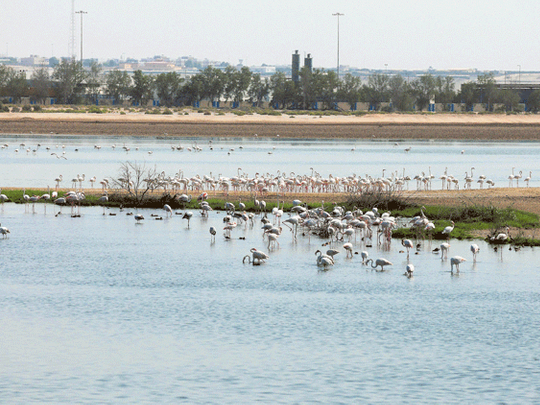
Abu Dhabi: It may seem strange, but six to eight million years ago Abu Dhabi was a land with rivers flowing through it that supported vast areas of lush grasslands.
“In Al Gharbia, we have a sequence of sands and clays that were deposited mainly by a river system,” said Dr Faisal Bibi, a paleontologist at the Museum für Naturkunde’s Leibniz Institute for Evolution and Biodiversity Science in Berlin.
“This ancient river system has been called the Baynunah River. Within those Baynunah sediments, we can find the remains of animals [and plants] that existed in the area at the time the river was active. The region had large, year-round freshwater flowing through it. This water would have sustained belts of vegetation around it, ranging from trees to grasslands.”
Dr Bibi says that the climate in the region can change yet again in the future, with factors such as global warming also playing a role.
“While we can’t predict the future, we know from studying the past that climate change occurred many times, sometimes in cycles. There may have been several periods of desertification going back millions of years. River systems such as the Baynunah might have come and gone several times.”
“However, with the current human-induced global warming crisis, conditions may get even drier in the near future.”
Abu Dhabi has been the scene of several fossil finds over the last few years, with the digs commissioned and undertaken by the Abu Dhabi Tourism and Culture Authority (TCA). The discoveries and studies have allowed experts to gain new insights into the region’s history.
Most recently, the fossilised remains of a monkey dating back 6 to 8.5 million years were discovered in Abu Dhabi’s Al Gharbia region.
Dr Bibi who has been conducting research and field work in Abu Dhabi, discussed some of the finds in the region that may appear surprising to many.
“We have sabre-toothed lions, different hyenas, two or three different species of giraffes, a small hippopotamus, several antelopes and gazelles, at least two different types of crocodiles, freshwater turtles, several kinds of freshwater fish, a big tortoise, swamp rats and different rodents, some birds including a large ostrich-like species, a type of horse that had 3 toes instead of 1, two or three species of elephants, and a guenon monkey.”
According to Dr Bibi, the wildlife in Abu Dhabi millions of years ago would represent something similar to Africa’s current day Savannah grasslands.
Dr Bibi also notes that new species are constantly being discovered through the fossil records, with the newly discovered monkey being one such example.
“Every time we search, we find something new. A new record, a new piece of information, or even a new species. With every find, we are closing gaps in our knowledge of ancient life on the Arabian peninsula.”
The next challenge Dr Bibi mentions is finding out exactly what happened when the climate in the region began to change, and how and when the animals became extinct or how they adapted and evolved.
“We often wonder what happened to the ecosystem supported by the Baynunah River. Unfortunately we haven’t yet found any fossils in the Arabian peninsula that can tell us what life was like just after Baynunah times. So far, we only have this single window into the past at around 7 million years ago. We don’t yet know what happened to many of the species we found, or exactly how they might have continued to evolve, or how and when they would have gone extinct.”
Sami Zaatari is a trainee at Gulf News.











